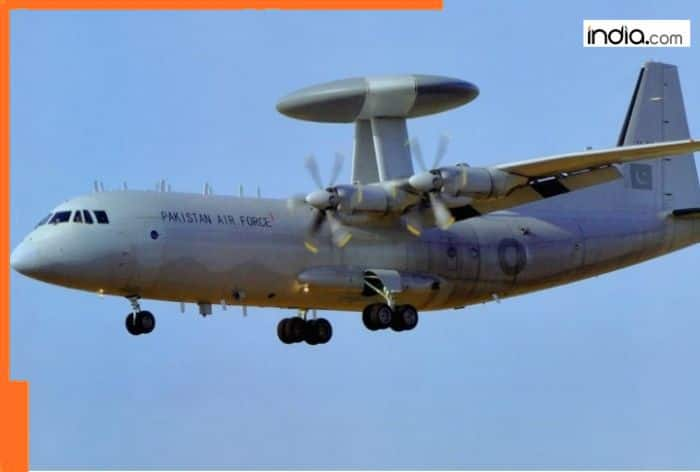IAF chief Air Marshal AP Singh said that at least five Pakistani fighter jets and one large aircraft was shot down using the S-400 system during Operation Sindoor.

Operation Sindoor: Indian Air Force (IAF) chief Air Chief Marshal AP Singh recently revealed that India used the S-400 Triumf air defense system and BrahMos supersonic cruise missiles to decimate key Pakistani military infrastructure and shoot down at least five enemy fighter jets, and a large military aircraft, presumably an ELINT or an AWACS plane, during Operation Sindoor.
The Air Chief’s revelation came months after India and Pakistan engaged in a dogfight on the night of May 6-7, considered the largest air battle of the 21st century as over 125 fighter jets participated in the engagement within a range of 500-700 kilometers, according to reports.
Following the aerial battle, Pakistan Air Force (PAF) claimed to have downed five Indian fighter jets, including three state-of-the-art Rafale fighters with PL-15 missiles fired from their Chinese-made J-10C fighter aircraft. India has refuted these claims, but it was later confirmed that one Rafale was lost due to high-altitude technical failure not a Pakistani missile attack.
However, the loss of a single Rafale is miniscule compared to Pakistan losing an AWACS aircraft because of multiple reasons.
Why AWACS loss is a huge setback to Pakistan?
The airborne early warning and control (AEW&C) system is an airborne radar early warning system used to detect aircraft, ships, vehicles, missiles and other incoming aerial threats at long ranges. A single AWACS aircraft costs about $100 million, which is roughly equivalent to the price of a Rafale fighter jet.
But the strategic importance of an AWACS system is manifold, making it a high-value military asset, which is well-guarded by fighter jets in the air and defense systems when grounded. However, India was able to penetrate Pakistan’s ai defense systems and destroyed an AWACS aircraft using its S-400 missile defense system.
“We were able to get at least two command and control centres, like Murid and Chaklala. At least six radars, some of them big, some of them small. Two SAGW systems that is in Lahore and Okara. We attacked three hangars. One was the Sukkur UAV hangar, the Bholari hangar and the Jacobabad F-16 hangar. We have an indication of at least one AEW&C in that AEW&C hangar and a few F-16s, which were under maintenance there,” IAF chief Air Marshal AP Singh said during his keynote address at the 16th edition of the Air Chief Marshal LM Katre Memorial Lecture last week.
How many Pakistani jets were downed during Operation Sindoor?
According to the IAF chief, at least five Pakistani fighter jets and one large aircraft was shot down using the S-400 system during Operation Sindoor. The large aircraft, presumed to be an AWACS plane, was downed from a distance of about 314 km, making it the longest-ever recorded surface-to-air kill in history.
“We have at least five fighters confirmed kills and one large aircraft, which could be either an ELINT (Electronic Intelligence) aircraft or an AEW &C (Airborne Early Warning and Control) aircraft, which was taken on at a distance of about 300 kilometres. This is actually the largest ever recorded surface-to-air kill that we can talk about,” he said.
Meanwhile. former Pakistan Air Force Marshal Masood Akhtar confirmed the loss of another AEW&C aircraft which was destroyed by India’s BrahMos missile attack on the Bholari Airbase in Islamabad during Operation Sindoor on the night May 9-10.
The PAF has ten operation AWACS aircraft (six Saab Erieye and four Chinese ZDK-03 ‘Karakoram Eagle’) against a fleet of more than 300 fighter jets, while the IAF six AWACS platforms for 500 fighter aircraft.
AWACS aircraft are often called the ‘eyes and ears’ of fighter jets as they offer 360-degree radar coverage, target guidance and real-time battle management, making their loss a bigger setback to any modern air force.














































